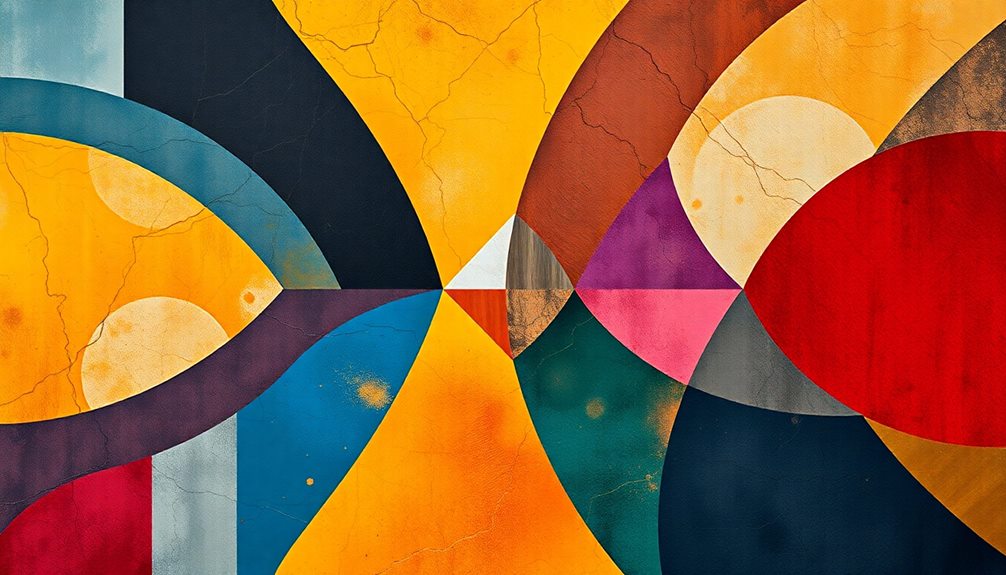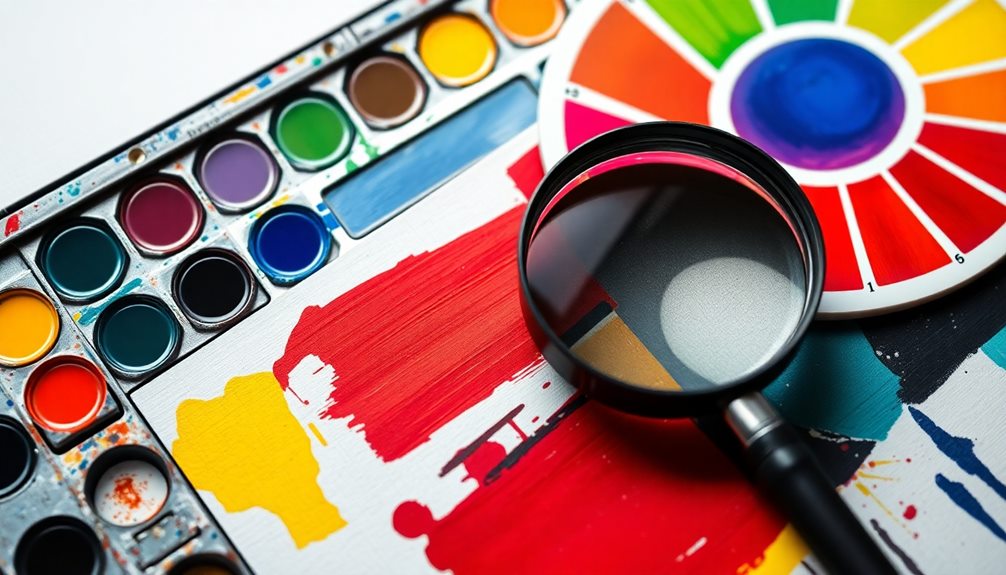When you explore texture and pattern from a formalist perspective, you'll notice how they shape emotional responses and enhance aesthetic experiences. Texture involves both physical qualities, like brushstrokes, and visual effects that create depth. Patterns, on the other hand, provide rhythm and balance, guiding your eye through the artwork. Techniques such as layering and color choices amplify these effects, allowing you to engage more deeply with what you see. By examining the interplay of texture and pattern, you can gain insights into the artist's intentions and the emotional narratives at play. There's much more to discover about this fascinating subject.
Key Takeaways
- A formalist perspective prioritizes aesthetic qualities of texture and pattern over contextual meanings in artworks.
- Texture, both physical and visual, enhances the overall impact and emotional resonance of art pieces.
- Patterns establish rhythm and movement, guiding viewer engagement and interpretation through repetitive arrangements.
- The interplay of texture and color contributes to the emotional impact and depth of the artwork.
- Subjective interpretations of texture and pattern reflect individual experiences, enriching the understanding of art.
Introduction
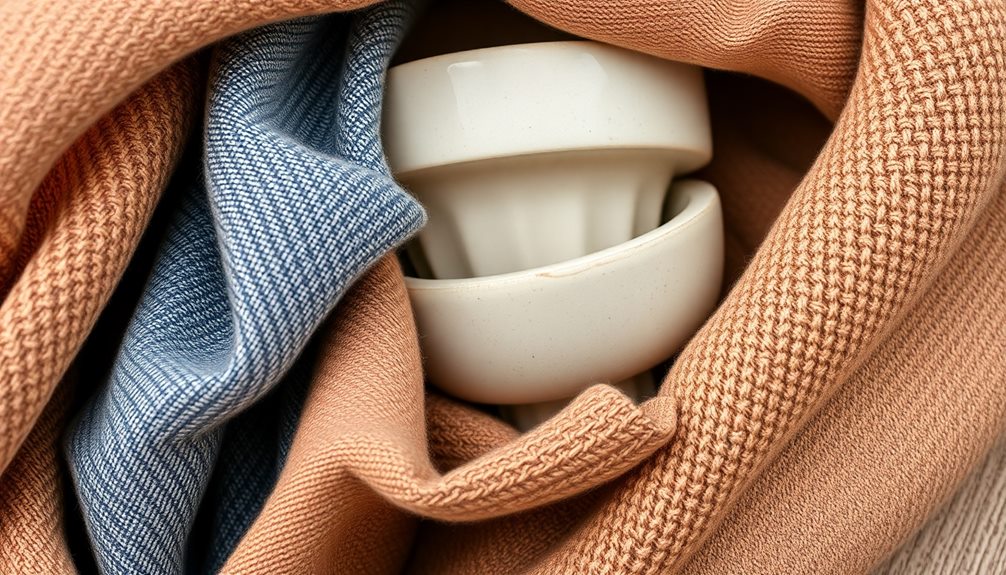
In art, texture and pattern play crucial roles that can captivate your senses and enhance your experience. When you observe a piece, you're not just seeing colors and shapes; you're feeling the surface quality of the artwork, which is known as texture. This texture can be physical, like the brushstrokes on a canvas, or visual, as seen in the illusion of depth and richness in a flat surface.
Patterns, on the other hand, are repetitive designs that create a visual rhythm, influencing how you perceive balance and composition.
The interplay between texture and pattern can significantly heighten your emotional response, as different textures can evoke various sensations and meanings. For instance, a rough texture might convey turmoil, while a smooth one could suggest calmness.
Key Concepts and Definitions
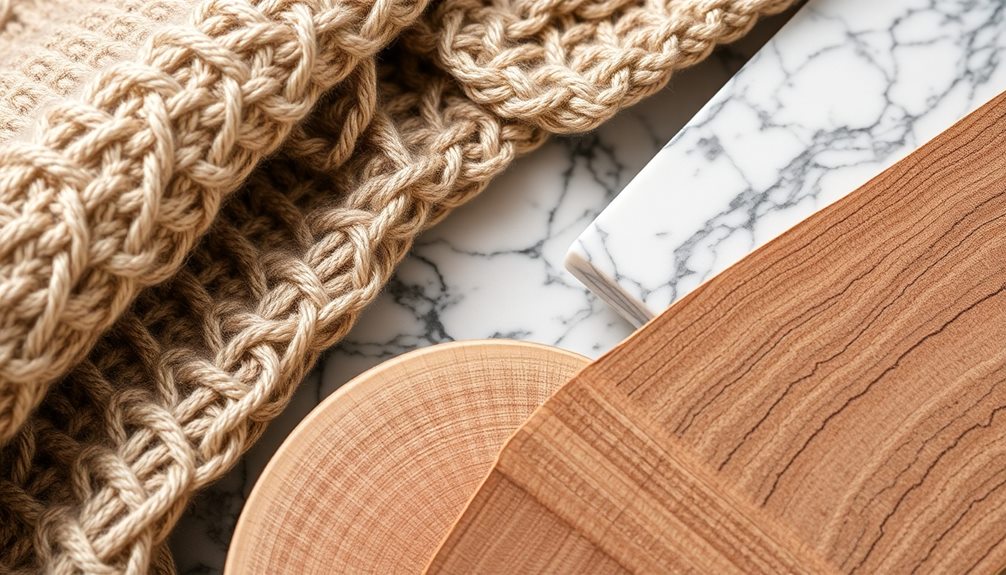
Understanding texture and pattern starts with grasping their definitions and key concepts. Texture in art refers to the surface quality of an object, which can be either physical (tactile) or visual (implied). It's crucial for enhancing realism and engaging viewers, making it a foundational element in your appreciation of art. Texture not only brings life to visual art but also plays a significant role in other creative expressions, such as writing. When describing texture in creative writing, authors often use sensory language to evoke vivid imagery, allowing readers to deeply feel and connect with the material being portrayed. By incorporating texture, whether smooth, rough, soft, or gritty, writers can enrich their storytelling and create more immersive, tactile experiences.
On the other hand, patterns consist of repetitive arrangements of elements that create visual rhythm, adding interest and influencing the overall composition.
In a Formalist perspective, both texture and pattern are analyzed for their formal qualities and relationships within a piece, focusing on their aesthetic rather than contextual significance. The way artists manipulate texture and pattern can evoke emotional responses and contribute to an artwork's harmony.
Techniques like layering, color application, and line work allow artists to achieve specific visual effects, engaging your perception even further.
Texture Analysis Techniques

Evaluating texture in artwork involves a careful examination of both its physical and visual qualities. You'll want to consider how artists utilize various materials and techniques to create texture. For instance, techniques like impasto produce a tangible, physical texture, while stippling generates the illusion of texture in two-dimensional works. Understanding these methods enhances your appreciation of the artwork's aesthetic experience.
Moreover, color choices play a crucial role in how texture is perceived. Warm colors might evoke softness, while cool colors can suggest smoothness. By analyzing these color interactions, you gain deeper insight into the intended emotional responses.
Close examination of texture can also reveal an artist's intentions and techniques, guiding your interpretation of the piece. You'll find that texture interacts with other formal elements, such as line and shape, contributing to the overall composition's harmony. This interplay directs your eye throughout the artwork, creating a cohesive visual experience.
In your analysis, remain attentive to how texture enhances the narrative or mood of the piece. By delving into texture analysis techniques, you uncover layers of meaning, enriching your understanding of the artwork's impact.
Textured Artworks in Context
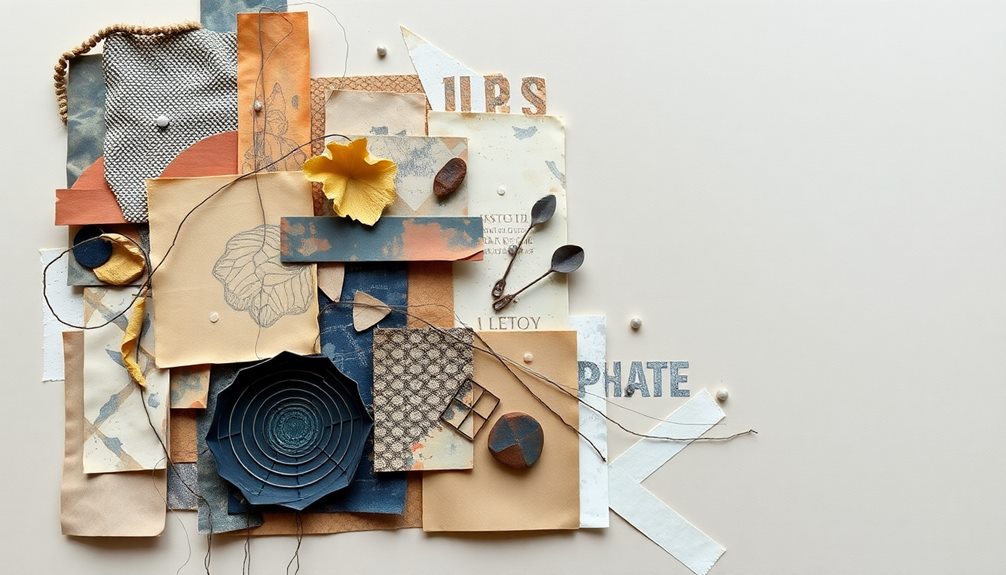
Textured artworks often stand out in the art world, captivating viewers with their rich surfaces and intricate details. Techniques like impasto and collage create tactile surfaces that invite you to engage with the piece more intimately.
When you explore these artworks, you might notice how the texture influences your perception of depth and dimension, making a flat canvas feel three-dimensional.
Patterns within textured artworks can establish rhythm and movement, guiding your eye across the composition. This dynamic visual experience keeps you engaged, as you discover new elements and relationships between the textures.
Artists like Vincent van Gogh and Anselm Kiefer exemplify innovative uses of texture, employing thick applications of paint and mixed media to evoke emotional responses.
In formal analysis, the interaction of texture with color, shape, and line plays a crucial role in creating aesthetic harmony.
You'll see how these elements work together to enhance the overall impact of the artwork. By understanding the context of texture, you deepen your appreciation for how artists communicate feelings and ideas, making textured artworks not just visually appealing, but emotionally resonant as well.
Tips and Best Practices

Incorporating texture and pattern into your artwork can elevate its visual impact and emotional resonance. Start by analyzing both physical and visual textures. Physical texture can be felt, while visual texture is created through techniques like shading and color variation. Pay close attention to how these elements interact to enhance your artwork.
Consider the role of pattern in your composition. Repeating shapes and lines can establish rhythm and harmony, adding to the overall aesthetic experience. Additionally, explore how texture and color interplay; contrasting textures can evoke various emotional responses and draw attention to specific elements within your piece.
Don't overlook the importance of space when working with texture. Varying textures can create depth and dimension, influencing the viewer's perception of your artwork's three-dimensionality.
Experiment with different materials and techniques to enrich your work; incorporating diverse textures can significantly enhance visual interest and expressiveness.
Lastly, remember that practice makes perfect. The more you explore and analyze texture and pattern, the more adept you'll become at integrating these elements into your art, ultimately leading to more compelling and dynamic creations.
Viewer Interpretations Vary Widely

Art is a mirror reflecting the diverse experiences and emotions of its viewers, leading to a wide range of interpretations regarding texture and pattern. When you engage with a piece of art, your background and personal experiences shape how you perceive its texture.
This perceived texture, whether real or implied, can evoke different emotional responses, prompting varied interpretations from you and others.
Patterns also play a crucial role in your understanding. For example, a repetitive geometric pattern might strike you as orderly and structured, while an organic pattern could resonate with feelings of chaos or nature.
This interplay between texture and pattern enhances your sensory experience, inviting you to explore your unique interpretations.
Formalist analysis focuses on the aesthetic qualities of texture and pattern, but it's essential to recognize how you project your narratives onto these elements.
Each viewer brings their interpretation, influenced by their cultural backgrounds and emotional reactions. As you observe artwork, remember that your interpretation of texture and pattern is just as valid as anyone else's, highlighting the rich diversity of human experience within the realm of art.
Subjectivity in Texture Interpretation

Your experience with texture in art can be deeply personal, shaped by your unique sensory perceptions and emotional responses. When you encounter different surface qualities, like roughness or smoothness, these textures can evoke specific feelings that influence how you engage with the artwork. For instance, a coarse texture might stir a sense of discomfort, while a soft one could evoke calmness.
Visual texture, achieved through techniques like shading and color application, adds depth and realism. This aspect allows you to perceive the artwork in a way that resonates with your individual experiences. As you observe patterns within textures, they can guide your eye and create a rhythm in the composition.
However, the interpretation of these patterns can significantly differ based on your personal experiences and cultural background.
Ultimately, the interplay between texture and pattern not only enhances the formal qualities of a piece but also invites you into a dialogue about its aesthetic and emotive aspects. Your subjective interpretation of texture enriches your understanding of the artwork, revealing the profound connection between perception and emotional resonance in art.
Additional Resources
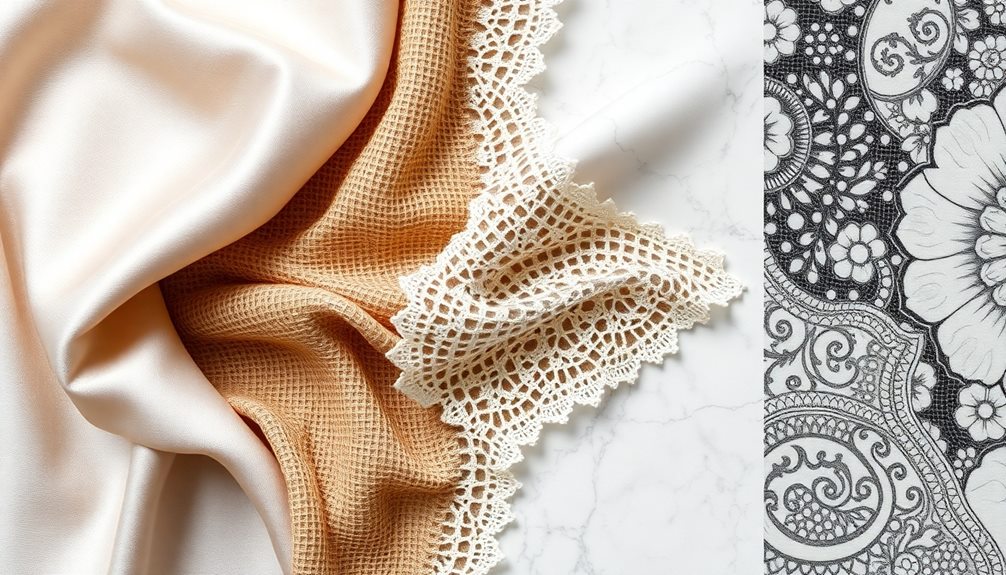
Exploring the nuances of texture and pattern in art can be greatly enriched by utilizing a variety of resources. Books on art theory often delve into formalist perspectives, providing insights into how texture contributes to a piece's overall impact. Look for texts that focus specifically on texture and pattern, as they'll help you understand their roles in creating visual interest and emotional responses.
Online platforms, such as art blogs and educational websites, offer articles and tutorials that break down how artists manipulate texture using color, line, and shading. You can enhance your understanding by watching videos or attending workshops where artists demonstrate these techniques in real-time.
Additionally, visiting galleries and museums allows you to engage with art firsthand, observing how texture and pattern interact within various works. Pay attention to the surface qualities and repetitive elements, noting how they influence your emotional response.
Lastly, consider joining art forums or discussion groups where you can share insights and resources with fellow enthusiasts, further deepening your appreciation for texture's crucial role in art.
Frequently Asked Questions
What Is a Formalist Perspective?
A formalist perspective focuses on analyzing an artwork's structure and aesthetic qualities, emphasizing visual elements like line, shape, and color. It prioritizes the work itself, often ignoring external context or deeper meanings.
What Is Texture and Pattern in Art?
Texture and pattern in art refer to the surface quality and repeated designs within a work. You can feel the texture or see the pattern, both enhancing visual interest and emotional impact in the artwork.
What Is Style in the Formalist Approach?
In the formalist approach, style's all about how you use elements like line, shape, and color. You focus on their arrangement and organization, highlighting the aesthetic experience without relying on narrative or external meanings.
What Is an Example of a Formalist Approach in Art?
A great example of a formalist approach in art is Jackson Pollock's drip paintings. You'll notice how he emphasizes the process and physicality of paint, prioritizing the visual experience over any narrative or context.
Conclusion
In conclusion, exploring texture and pattern through a formalist lens enriches your understanding of art. You've learned key concepts, analysis techniques, and how context shapes textured artworks. Remember, your interpretation matters, and it can vary widely from others. Embrace this subjectivity, and don't hesitate to experiment with the tips and best practices shared. Keep delving into the fascinating world of texture, and let your unique perspective shine through in your interpretations and creations.
